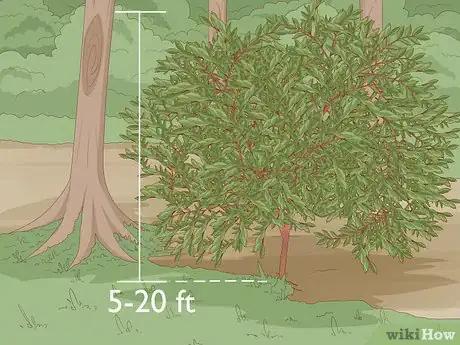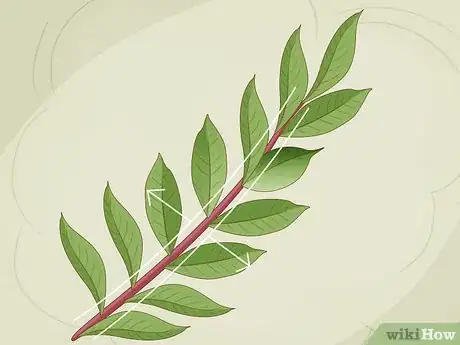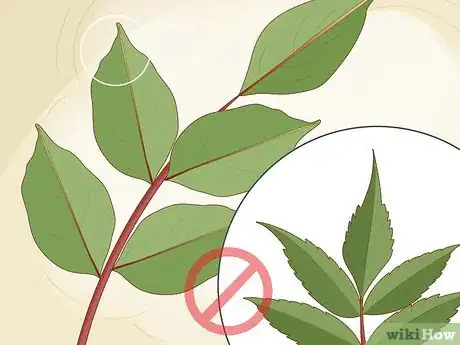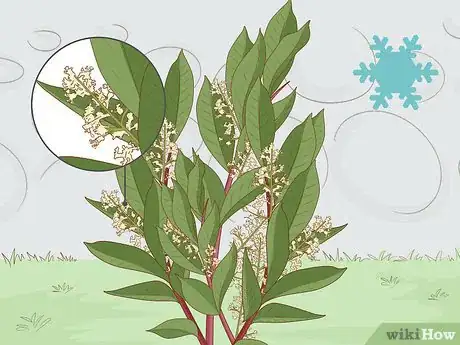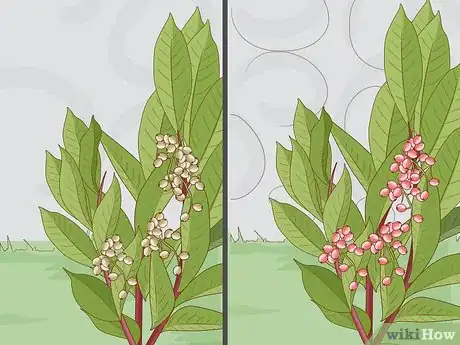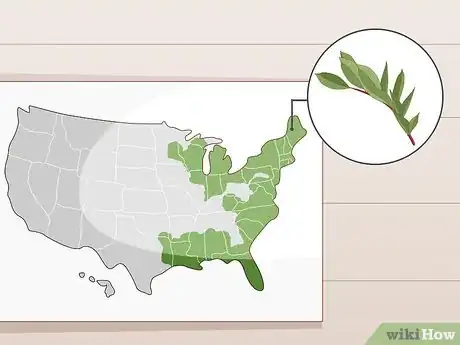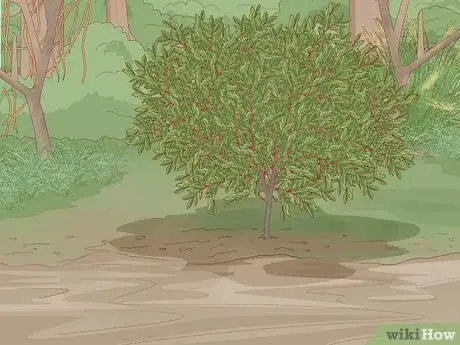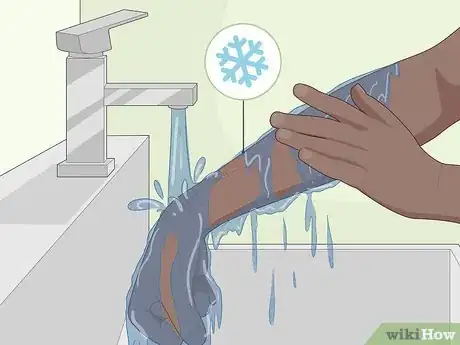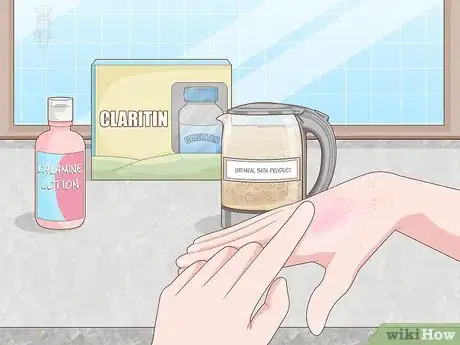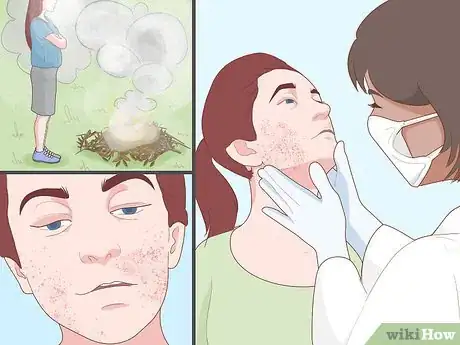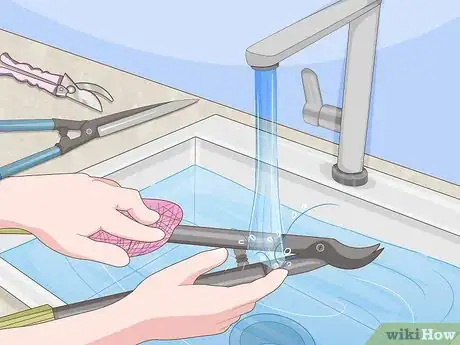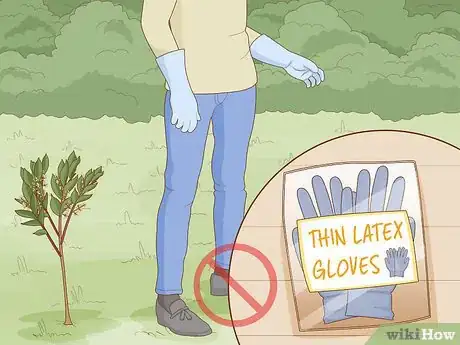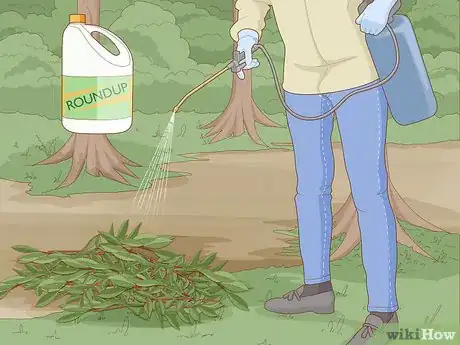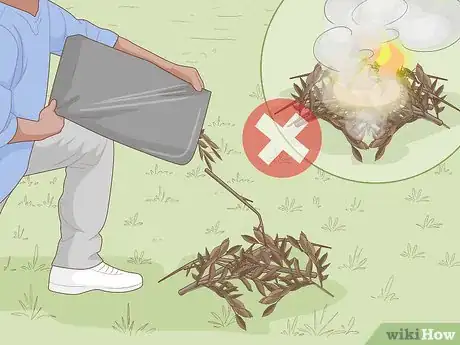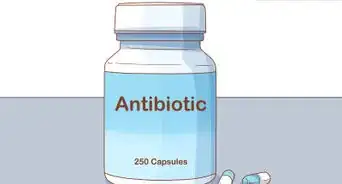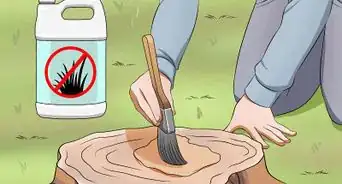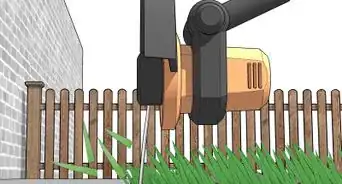This article was co-authored by Michael Simpson, PhD and by wikiHow staff writer, Hannah Madden. Dr. Michael Simpson (Mike) is a Registered Professional Biologist in British Columbia, Canada. He has over 20 years of experience in ecology research and professional practice in Britain and North America, with an emphasis on plants and biological diversity. Mike also specializes in science communication and providing education and technical support for ecology projects. Mike received a BSc with honors in Ecology and an MA in Society, Science, and Nature from The University of Lancaster in England as well as a Ph.D. from the University of Alberta. He has worked in British, North American, and South American ecosystems, and with First Nations communities, non-profits, government, academia, and industry.
There are 14 references cited in this article, which can be found at the bottom of the page.
wikiHow marks an article as reader-approved once it receives enough positive feedback. This article received 28 testimonials and 100% of readers who voted found it helpful, earning it our reader-approved status.
This article has been viewed 934,213 times.
You probably know about poison ivy and even poison oak, but poison sumac can be a little bit harder to spot. It’s a plant that’s native to the eastern United States and Canada, and it can cause a red, itchy rash and blisters, similar to a poison ivy rash. The best way to avoid an allergic reaction to this plant is to identify the characteristics and stay far away from it, if you can. If you do come into contact with poison sumac, wash your affected skin right away and clean your tools or clothes, too.
Steps
Physical Characteristics
-
1Look for a 5 to 20 ft (1.5 to 6.1 m) shrub or tree. Poison sumac typically grows into a shrub or tree about 5–20 ft (1.5–6 m) in height, but may occasionally grow even taller. While some poison tree varieties look more like shrubs, poison sumac looks fairly sparse.[1]
- Large poison sumac trees, like other species of sumac, often grow long, thin branches that sag or tilt downward with age.
-
2Look for double rows of leaves on each stem. On poison sumac plants, each stem has 2 parallel rows of leaves growing along its length. Each stem usually has between 6 and 12 leaves, plus an additional single leaf at the end. Young stems are typically red or red-brown, but this color may fade to brown or grey as the plant ages.[2]
- Technically, the leaves of a pinnate leaf are called “leaflets.”
Advertisement -
3Pick out the oblong shape of the poison sumac’s leaves. The leaves of this plant have an oval or oblong shape, tapering to a wedge or point on each end.[3] The sides of the leaf may appear wavy or smooth, but will not have the jagged "tooth" appearance of some non-poisonous sumac trees.
- If you aren’t sure if it’s poisonous or not, don’t touch it!
- Poison sumac leaves change color throughout the year, just like other deciduous plants. They may range from orange to green to red.
-
4Look for pale yellow or green flowers in the spring or summer. During the spring and summer, poison sumac may have pale yellow or green flowers. These small flowers grow in clusters along their own, green stems, separate from the red leafy stems.[4]
- The flowers are extremely tiny, and they can be hard to see at first glance.
-
5Find green or yellow berries during the fall.[5] During summer or early fall, poison sumac replaces its flowers with berries. They can be pale-yellow, glossy, or cream-colored, and they often hang down low on the plant.[6]
- The berries may be eaten by animals or fall off naturally during the winter, so it’s not a surefire way to identify poison sumac.
Poison Sumac’s Habitat
-
1Be cautious if you live in the eastern United States or Canada. Unlike its relatives, poison ivy and poison oak, poison sumac is restricted to a fairly small area of the world. If you are outside the following areas, your chance of encountering poison sumac is almost zero:[7]
- Ontario, Quebec, and other eastern provinces of Canada.
- Minnesota, Wisconsin, and all U.S. states east of them, including all of New England.
- Illinois, Kentucky, Tennessee, and all U.S. states east of them, including all of the South.
- Texas, and all states east of it along the southern U.S. border, including Florida.
-
2Look for poison sumac in moist or flooded soils. Poison sumac thrives in unusually wet soil, or even in standing water.[8] If the surrounding area is dry throughout the year, there is little chance that poison sumac is present.[9]
- During dry weather, keep an eye out for empty riverbeds or dried mud that indicate the area may usually be wet.
- These spots that are often flooded are also called wetlands.
-
3Be wary of poison sumac if you’re at a low elevation. Poison sumac has trouble growing at 4,000 ft (1,200 m) above sea level or above. If you are above 5,000 ft (1,500 m), there is almost no chance of exposure to poison sumac.[10]
- Its relatives, poison ivy and poison oak, are also constrained to low elevations, meaning you’re pretty much safe if you’re up high.
Treating Poison Sumac Exposure
-
1Wash your affected skin with soap and water. As soon as you know you’ve been exposed, wash your skin off with water right away. Do not use warm water because it will open your pores and make the exposure worse. You may also use soap, detergent, or specialized products such as Tecnu, but wash these off frequently so they do not dry on your skin along with any toxin they have picked up.[11]
- The oil from the leaves is what causes the rash, so the sooner you get it off your skin, the better.
-
2Rub calamine lotion on the rash to reduce itching. For a topical solution, pick up a bottle of calamine lotion from your local drug store and apply it to your rash as you need it. The calamine will help to soothe your skin and stop it from itching as much, so you can hopefully get some relief.[12]
- If you develop large, oozing blisters, you may wish to visit a doctor for prescription-strength treatment.
- Ooze from blisters does not contain the toxin, so it cannot spread the rash.
-
3Soak in a cool bath with an oatmeal product. Fill up a bathtub with cool (not freezing cold!) water, then pour a small amount of an oatmeal bath product in with the water. Lower yourself into the tub and make sure the affected area is submerged, then stay in the bath for 10 to 20 minutes, or until you get too chilly.[13]
- Both the cold water and the oatmeal product will help soothe your itchy skin.
-
4Take oral antihistamines to relieve itching and pain. While most poison sumac rashes go away on their own within a few weeks, they can cause itching and pain that makes it hard to sleep. Try taking an antihistamine, like Benadryl or Claritin, to help relieve your symptoms.[14]
- You can find oral antihistamines at most drug stores.
-
5Seek medical attention if your rash is severe. If you suspect you inhaled poison sumac smoke, seek medical attention immediately even if symptoms have not developed. Other serious situations that may require a doctor's attention include a rash on your face or genitals, or a rash anywhere that fails to reduce in size after a week, as well as eyes that are swollen shut, or trouble breathing.[15]
- If you inhaled smoke from a burning poison sumac and you’re having trouble breathing, seek medical attention right away.
-
6Wash any exposed tools and clothing. If you leave the sumac oil on tools or clothing, they can spread the rash for months or years after the initial exposure. Put on disposable gloves and wash tools with soap and water. Store clothes in disposable bags during transport, then wash them in soap and hot water separate from everything else.[16]
- Your clothes and tools can spread the oil to other objects, so be sure to keep them away from everything until you get a chance to wash them.
Removing Poison Sumac
-
1Put on protective clothing. Before you get started, make sure to cover all of your skin. Wear a long sleeve shirt, pants that cover your legs completely, and socks and shoes that cover your feet. Put on safety glasses to protect your eyes, and wear gloves to cover your hands. This will help to reduce your chances of exposure.[17]
- Wear cotton or leather gloves, not latex ones. Latex is not thick enough to protect you from the poison sumac oil.
-
2Use an herbicide that is absorbed through the leaves. Cut the tree or bush down to about 1 ft (0.30 m) above ground level, then apply the plant spray immediately. Make sure to spray all areas of the plant including the roots, vines, and leaves. You may have to do several treatments. Continue to spray the plants until no new growth appears.[18]
- Keep in mind that spraying the plants with herbicides may kill other plants in the area.
-
3Throw away all of the dead plant materials. Once the sumac tree or bush is dead, collect all of the plant remains including any leaves that have fallen off the plant. Place the dead plant materials in trash bags and put the bags out with the trash, not the yard debris.[19]
- Do not burn any of the plant materials because the smoke can irritate your lungs and cause a rash if it comes into contact with your skin.[20]
Expert Q&A
-
QuestionWhat does the poison sumac rash look like?
 Maggie MoranMaggie Moran is a Professional Gardener in Pennsylvania.
Maggie MoranMaggie Moran is a Professional Gardener in Pennsylvania.
Home & Garden Specialist It starts out most often as a mild itching that slowly turns into a red rash. Shortly after this, bumps will start to form at the rash spots that can become blisters.
It starts out most often as a mild itching that slowly turns into a red rash. Shortly after this, bumps will start to form at the rash spots that can become blisters. -
QuestionWhere is poison sumac?
 Maggie MoranMaggie Moran is a Professional Gardener in Pennsylvania.
Maggie MoranMaggie Moran is a Professional Gardener in Pennsylvania.
Home & Garden Specialist It is most commonly found in wooded swampy areas. In the United States, that is in Florida and the southeastern states.
It is most commonly found in wooded swampy areas. In the United States, that is in Florida and the southeastern states. -
QuestionWhat does poison oak rash look like?
 Maggie MoranMaggie Moran is a Professional Gardener in Pennsylvania.
Maggie MoranMaggie Moran is a Professional Gardener in Pennsylvania.
Home & Garden Specialist It is similar to rashes the other poisons produce; it's a red rash with mild itching followed by bumps and mild blisters.
It is similar to rashes the other poisons produce; it's a red rash with mild itching followed by bumps and mild blisters.
Warnings
- Never burn plant matter taken from an area where poison sumac grows. Inhaling the oil from poison sumac plants can cause serious respiratory harm, or even death.[21]⧼thumbs_response⧽
References
- ↑ http://edis.ifas.ufl.edu/ep220
- ↑ https://www.aces.edu/blog/topics/forestry/touch-me-nots-poison-ivy-poison-oak-and-poison-sumac/
- ↑ Michael Simpson, PhD. Registered Professional Biologist. Expert Interview. 8 September 2021.
- ↑ https://plants.usda.gov/core/profile?symbol=TOVE
- ↑ https://www.cdc.gov/niosh/topics/plants/identification.html
- ↑ Michael Simpson, PhD. Registered Professional Biologist. Expert Interview. 8 September 2021.
- ↑ http://plants.usda.gov/core/profile?symbol=TOVE
- ↑ Michael Simpson, PhD. Registered Professional Biologist. Expert Interview. 8 September 2021.
- ↑ https://www.chop.edu/news/health-tip/recognizing-poison-ivy-oak-and-sumac
- ↑ https://wa.kaiserpermanente.org/kbase/topic.jhtml?docId=hw74805
- ↑ https://www.aad.org/public/everyday-care/itchy-skin/poison-ivy/touch-plant
- ↑ https://www.aad.org/public/everyday-care/itchy-skin/poison-ivy/treat-rash
- ↑ https://www.aad.org/public/everyday-care/itchy-skin/poison-ivy/treat-rash
- ↑ https://edis.ifas.ufl.edu/ep220
- ↑ https://www.mayoclinic.org/diseases-conditions/poison-ivy/symptoms-causes/syc-20376485
- ↑ https://edis.ifas.ufl.edu/ep220
- ↑ https://www.iwu.edu/physical-plant/tailgate/grounds-tailgate/april-poison-ivy-oak-sumac.pdf
- ↑ https://www.nationwidechildrens.org/conditions/poison-ivy-poison-oak-and-poison-sumac
- ↑ https://www.nationwidechildrens.org/conditions/poison-ivy-poison-oak-and-poison-sumac
- ↑ https://www.mayoclinic.org/diseases-conditions/poison-ivy/symptoms-causes/syc-20376485
- ↑ https://www.mayoclinic.org/diseases-conditions/poison-ivy/symptoms-causes/syc-20376485
About This Article
Poison sumac is a shrub or small tree found in swamps, bogs, and river banks in the Southeastern and Northern United States. Poison sumac has reddish stems that are covered in symmetrical rows of leaves. The leaves on a poison sumac are angled slightly upward, and they’re smooth and oblong-shaped. Most poison sumac leaves are green, but they may be red or orange in early spring or fall. If you are exposed to poison sumac, wash the rash with soap and cool water to remove the plant’s oils. Then, wash the clothes that you were wearing and apply calamine lotion or hydrocortisone cream to the affected area. To learn how to treat poison sumac exposure, scroll down.
